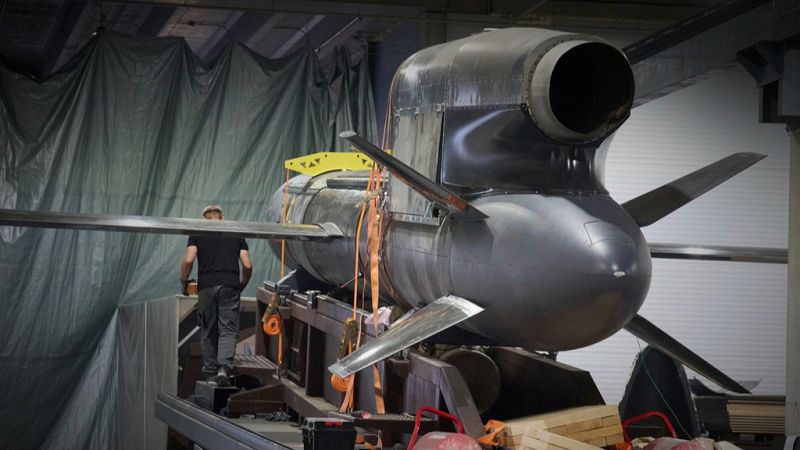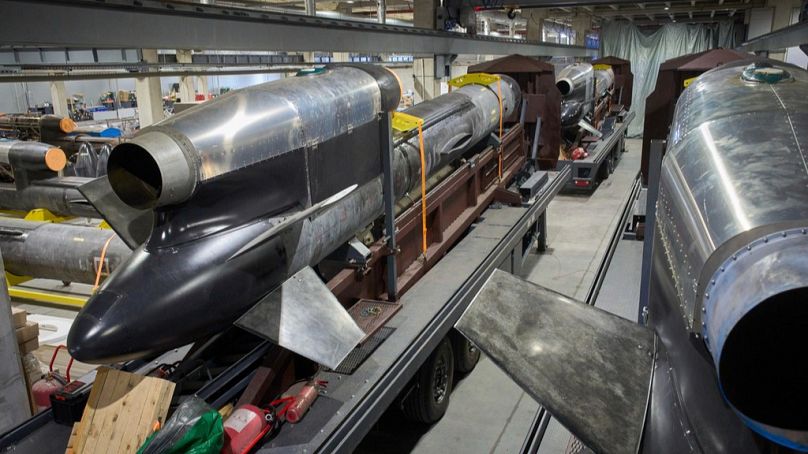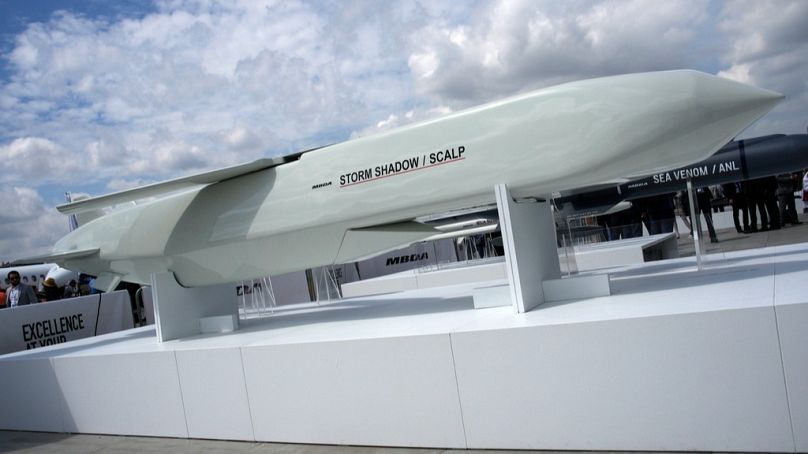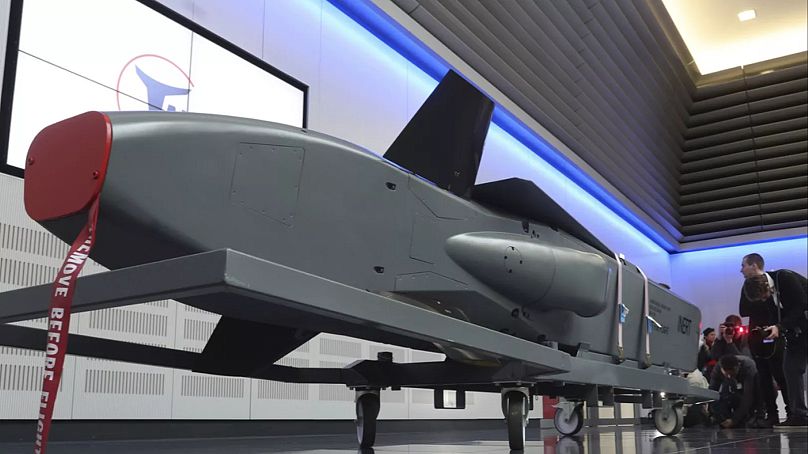Will Ukraine’s new long-range Flamingo cruise missile put Russia on red alert?

As Russia continues to unleash a major wave of airstrikes across Ukraine, Kyiv revealed a domestically made long-range cruise missile that could prove a game-changer in the war.
The FP-5 “Flamingo” missile is capable of travelling 3,000km and delivering a payload of 1,150kg, according to its maker, the Ukrainian defence start-up Fire Point.
The firm said it is producing roughly one Flamingo per day, and hoped to build capacity to make seven per day by October. That would equate to more than 200 missiles each month, or some 2,500 a year.
Ukrainian President Volodymyr Zelenskyy said last week that the Flamingo had undergone successful testing and should go into mass production by February at the latest.
"The missile has undergone successful tests. It is currently our most successful missile," he told reporters.
"By December, we’ll have more of them,” Zelenskyy told reporters. “And by the end of December or in January–February, mass production should begin.”
The Flamingo’s explosive capabilities greatly outweigh the long-range drones and mini-cruise missiles Ukraine currently employs, according to Fabian Hoffmann, a doctoral research fellow and missile expert at the University of Oslo in Norway.
The missile’s high terminal velocity, in combination with its heavy weight, means that the warhead penetrates deeper into the target before exploding, which significantly increases the destructive power, he wrote last week in his Substack entitled Missile Matters.
Second, the Flamingo’s large payload capacity produces a much wider lethal radius than existing Ukrainian missiles and drones, according to Hoffmann.
“Even achieving a steady monthly output of 30-50 missiles would give Ukraine a substantial supply of heavy cruise missiles that would likely have tangible effects on the war,” he wrote.
The unveiling of the Flamingo comes amid reports that the Pentagon has blocked Kyiv from using US-supplied long-range missiles to hit targets inside Russia, as US President Donald Trump tries to get his Russian counterpart Vladimir Putin to join peace talks.
Washington has stopped Ukraine from deploying the Army Tactical Missile Systems (ATACMS) against targets in Russia for several months, the Wall Street Journal reported on Saturday.
Speaking at a press conference the following day, Zelenskyy said that Ukraine could hit targets deep inside Russia without the need for coordination with Washington.
“As of today, we are using our domestically produced long-range weapons. And to be honest, we haven't been discussing such matters with the US lately," he said.
Controversy over Germany’s Taurus
Zelenskyy’s remarks about the Flamingo followed months of speculation over whether Ukraine would receive the arms it has long sought: Germany’s Taurus cruise missiles.
Equipped with stealth technology, the Taurus has a range of up to 500km, which would be able to reach targets deep in Russia from Ukrainian soil.
Ukraine has been asking Germany for the missiles to complement the long-range Storm Shadow missiles sent by the UK and France’s nearly identical Scalp cruise missiles.
Germany is the second biggest provider of military aid to Ukraine after the US and has pledged this year to further ramp up its support.
However, ex-Chancellor Olaf Scholz refused to supply Ukraine with Taurus missiles because he did not want Germany to be directly involved in the war.
Austrian military expert Gustav Gressel told Euronews he believed the discussion around the Taurus in Germany was “a little absurd”.
Gressel pointed out that Scholz had said that the risk of escalation was significant, as were the training costs involved, even though the Ukrainians had already used the UK’s Storm Shadow “without it being the end of the world”.
‘Ukraine’s strongest security guarantee’
During the German election campaign, the country’s now-Chancellor Friedrich Merz signalled his intention to supply Ukraine with the Taurus missiles if he was elected.
In early July, Merz said that decision was still under consideration.
A fortnight later, German Defence Minister Boris Pistorius told the Financial Times that the country would not supply Ukraine with the Taurus missiles.
During Merz’s first official visit to Kyiv back in May, he said that the German government would stop disclosing details about military aid for Ukraine. The reason for this was “strategic ambiguity”, so that Russia would not know in advance which weapons were being supplied.
This was followed by an announcement that Berlin and Kyiv would work together to develop the industrial production of long-range missiles.
“Germany will finance the future production of long-range weapons systems in Ukraine,” the defence ministry said in a press release on 28 May.
"A considerable number of long-range weapons systems are to be produced in 2025. The weapon systems will be available to the Ukrainian armed forces quickly — the first ones can be deployed in just a few weeks.”
It is unclear whether the German government has co-financed the Flamingo cruise missile.
In response to a question from Euronews, a spokesperson for Germany’s defence ministry said that “for reasons of military security, no questions can be answered about individual weapons systems or support for individual commercial enterprises”.
Gressel — the military expert — said that although the Taurus is more difficult to detect on radar and more manoeuvrable than the Flamingo, the latter “has a far greater range and warhead, so it has a far greater effect on the target”.
Whether or not the Flamingo will ultimately change the nature of the war in Ukraine depends on the intel that Kyiv has about its targets, according to Gressel.
"Is the target strongly defended? Are there gaps in the Russian air defence? Where and when are Russian fighter patrols in the air that could intercept the missile? The more precisely you know this, the better you can plan missions," he explained.
For Hoffmann of the University of Oslo, the mass production of the Flamingo does not only have major implications for Russia’s ongoing war, but also Ukraine’s post-war deterrence.
“That is Ukraine’s strongest security guarantee,” Hoffmann said in a post on X. “If it can field 3,000 to 5,000 of these (and similar) missiles, ready within 24 to 48 hours to destroy upward of 25% of Russia’s economic output, further Russian aggression becomes untenable.”
Today




